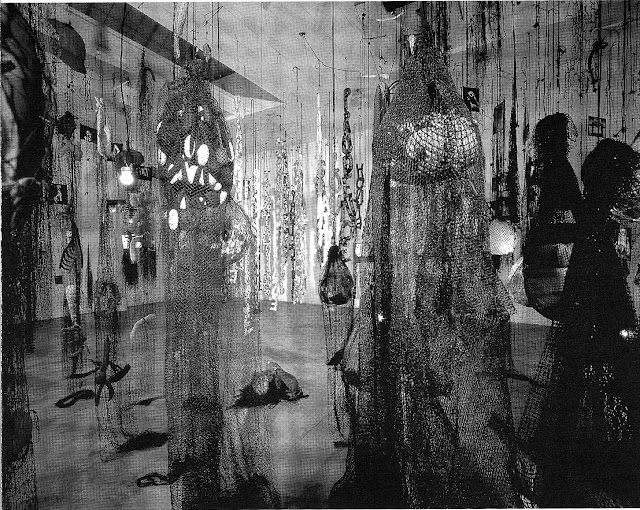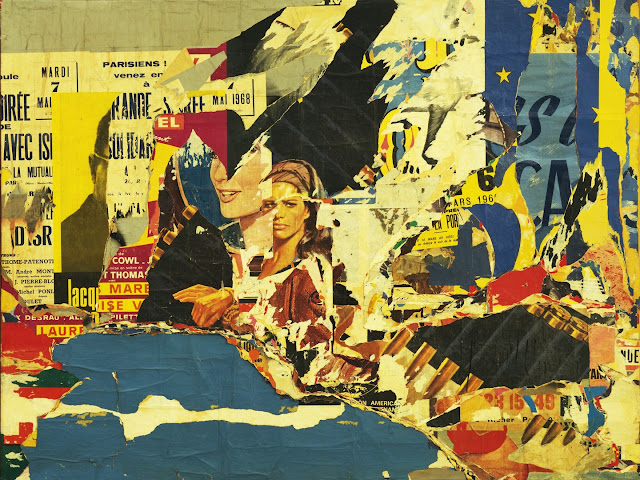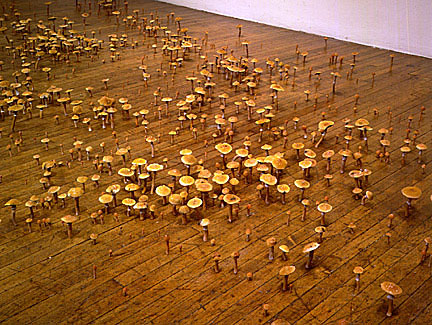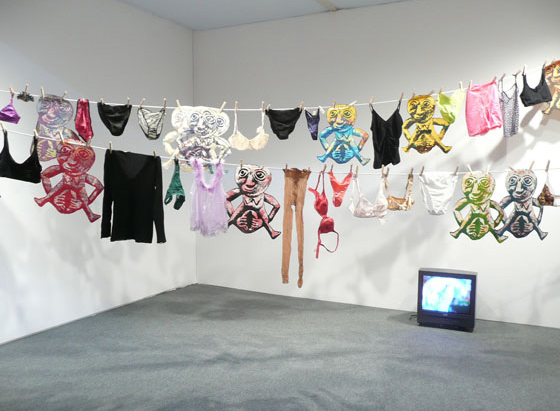Annette Messager "DependanceIndependance" at Gagosian

The most recent exhibition by Annette Messager finds her deconstructing her collective oeuvre through an accruance of the motifs that have previously represented her. Dependance lndependance (1995-97) fills the room of Gagosian Gallery, employing both the scale and cavernous feel of the gallery space. Dependancelndependance seems a complete departure from the sophisticated games between language and assemblage evident in many of her previous ereations. Whereas in earlier assemblages such as Penetration (1993 94) or Parade (1994 95) there was a tangible separation between the experience of the viewer and the drama enacted by the installation, here Messager seems to intend the complete confusion of the two. Entering the gallery, the first thing one sees is a mass of coils and nets which hold plastic bags filled with colourful masses resembling human organs or lost objects from the distant past. It is difficult to discern relative wholes within the mixture of images and objects. Howe


